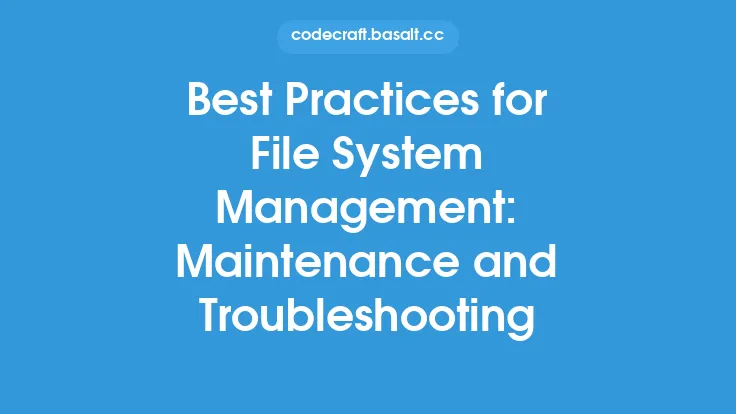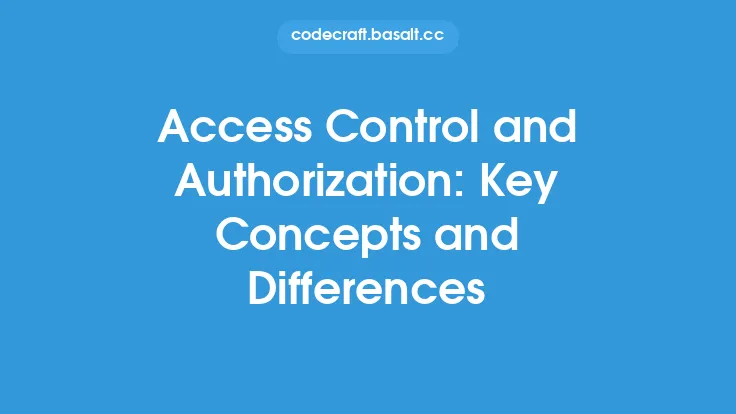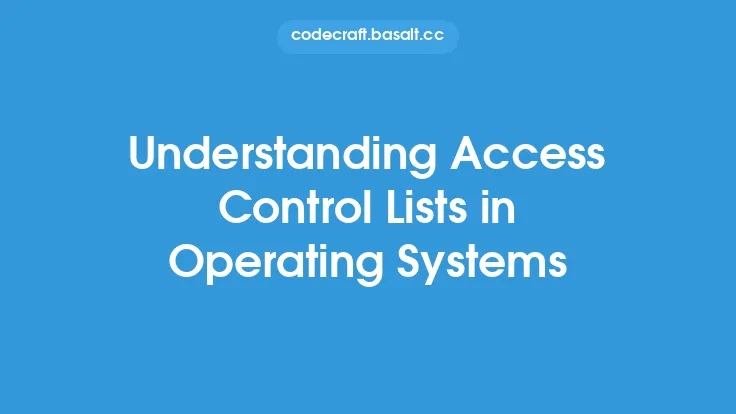Implementing access control lists (ACLs) is a crucial aspect of cybersecurity, as it enables organizations to control and manage access to their resources, systems, and data. ACLs are used to define the permissions and access rights of users, groups, and processes, ensuring that only authorized entities can access sensitive information and perform specific actions. In this article, we will delve into the best practices for implementing ACLs, providing a comprehensive guide for organizations to secure their assets and protect against unauthorized access.
Introduction to Access Control Lists
Access control lists are a fundamental component of access control systems, providing a flexible and scalable way to manage access to resources. An ACL is a list of access control entries (ACEs) that define the permissions and access rights of a user, group, or process. Each ACE specifies the entity, the resource, and the actions that can be performed on that resource. ACLs can be used to control access to various types of resources, including files, directories, network shares, and applications.
Benefits of Access Control Lists
The implementation of ACLs offers several benefits, including:
- Improved security: ACLs help prevent unauthorized access to sensitive information and resources, reducing the risk of data breaches and cyber attacks.
- Fine-grained control: ACLs provide a high level of granularity, allowing organizations to define specific permissions and access rights for each user, group, or process.
- Flexibility: ACLs can be used to control access to a wide range of resources, making them a versatile and adaptable security solution.
- Scalability: ACLs can be easily managed and updated, making them suitable for large and complex environments.
Best Practices for Implementing Access Control Lists
To ensure the effective implementation of ACLs, organizations should follow these best practices:
- Define clear access control policies: Establish a clear understanding of the access control requirements and define policies that outline the permissions and access rights for each user, group, or process.
- Use a least privilege approach: Assign the minimum level of access required for each user, group, or process to perform their tasks, reducing the risk of unauthorized access.
- Implement role-based access control: Use roles to define access control policies, making it easier to manage and update access rights as users change roles or responsibilities.
- Use groups and nested groups: Use groups to simplify access control management, and nested groups to create a hierarchical structure that reflects the organization's structure and relationships.
- Regularly review and update ACLs: Regularly review and update ACLs to ensure they remain accurate and effective, and to reflect changes in the organization's structure, policies, or access control requirements.
Access Control List Implementation Considerations
When implementing ACLs, organizations should consider the following factors:
- Resource ownership: Define the ownership of resources and ensure that the owner has the necessary permissions and access rights.
- Inheritance: Use inheritance to propagate access control permissions from parent resources to child resources, simplifying access control management.
- Access control entry ordering: Ensure that ACEs are ordered correctly to avoid conflicts and ensure that the most specific permissions are applied first.
- Deny and allow permissions: Use deny and allow permissions to control access to resources, and ensure that deny permissions are used sparingly to avoid conflicts and ensure that access is granted correctly.
Access Control List Management Tools and Techniques
To effectively manage ACLs, organizations can use various tools and techniques, including:
- Access control list editors: Use specialized editors to create, modify, and manage ACLs, making it easier to manage complex access control policies.
- Scripting and automation: Use scripting and automation tools to automate ACL management tasks, reducing the risk of human error and improving efficiency.
- Access control list analysis tools: Use analysis tools to review and analyze ACLs, identifying potential issues and ensuring that access control policies are effective and accurate.
Common Access Control List Implementation Mistakes
When implementing ACLs, organizations should avoid the following common mistakes:
- Overly permissive access control: Avoid granting excessive permissions or access rights, as this can increase the risk of unauthorized access and data breaches.
- Inconsistent access control: Ensure that access control policies are consistent across all resources and systems, avoiding conflicts and ensuring that access is granted correctly.
- Insufficient access control: Avoid insufficient access control, as this can leave resources and systems vulnerable to unauthorized access and cyber attacks.
Conclusion
Implementing access control lists is a critical aspect of cybersecurity, providing a flexible and scalable way to manage access to resources, systems, and data. By following best practices, considering implementation factors, and using management tools and techniques, organizations can ensure the effective implementation of ACLs and protect against unauthorized access. Remember to regularly review and update ACLs, and avoid common implementation mistakes to ensure the security and integrity of your organization's assets.





